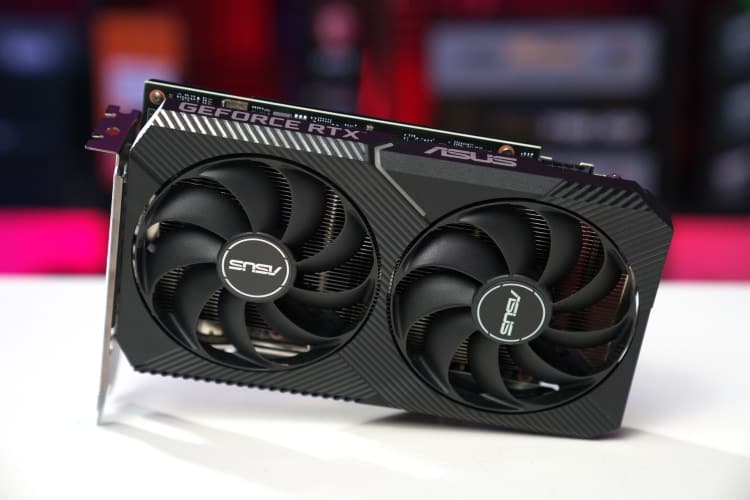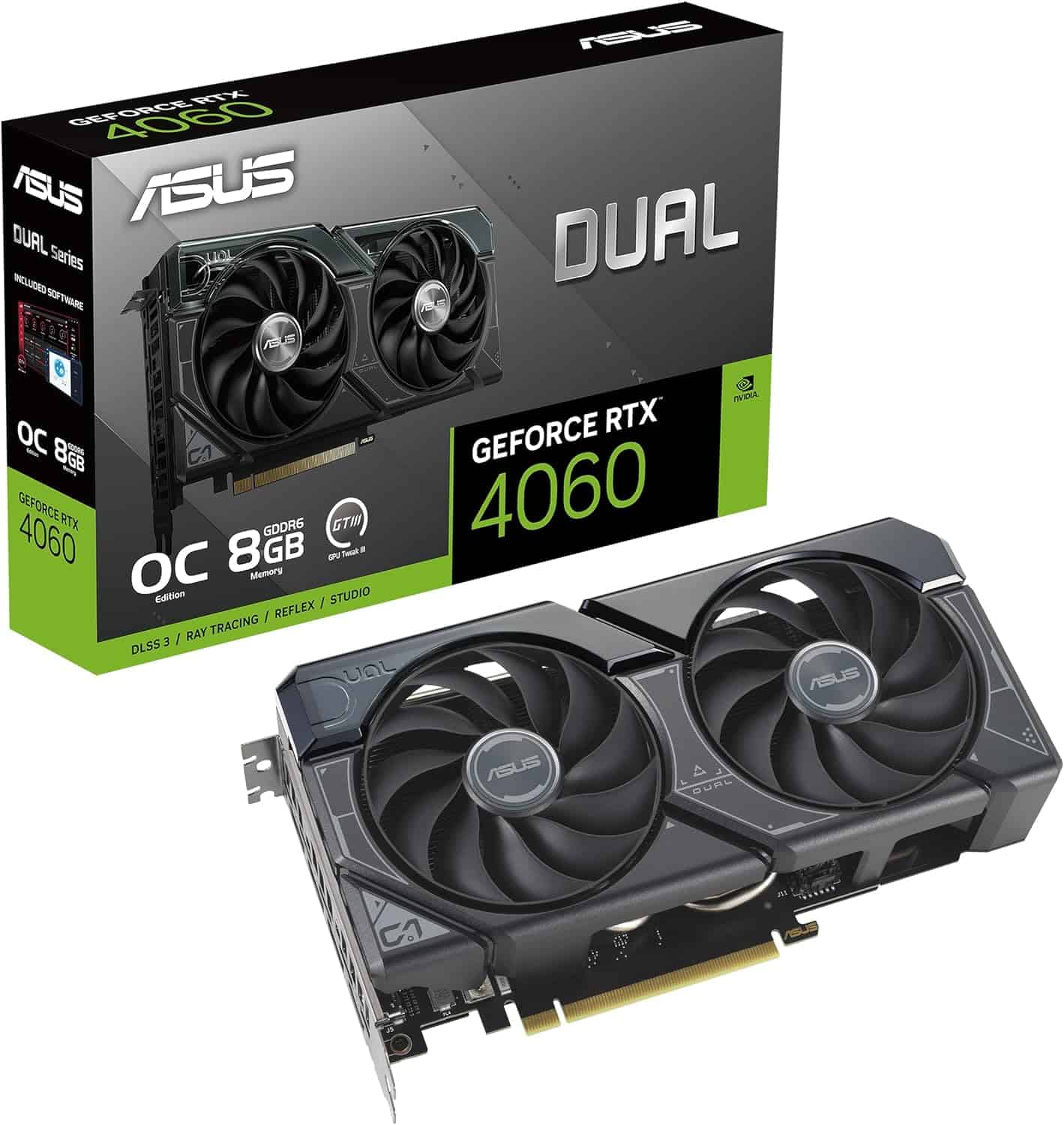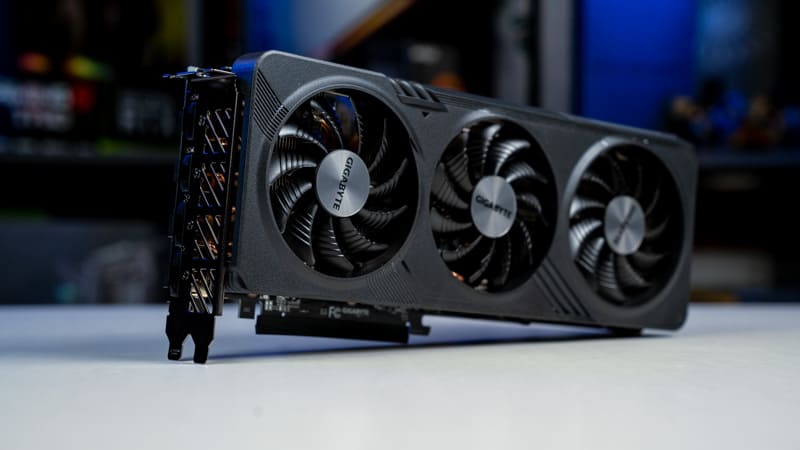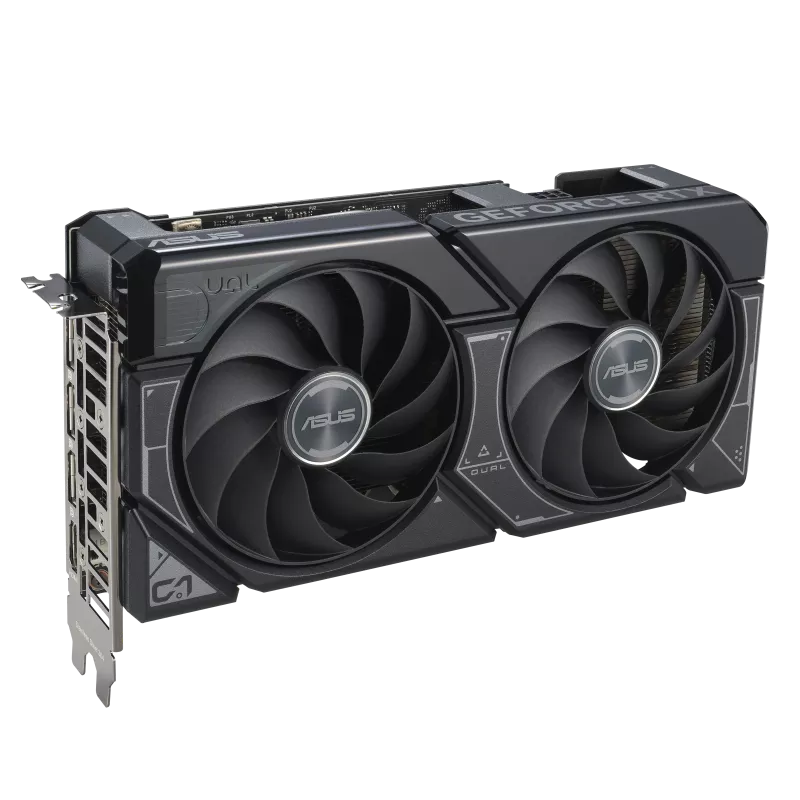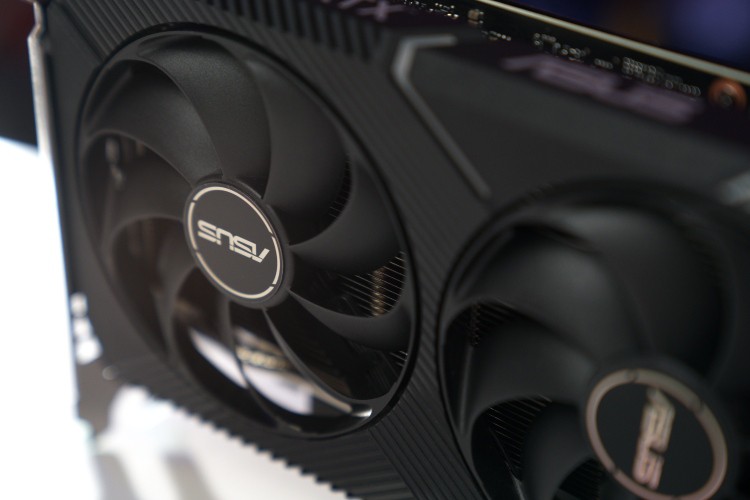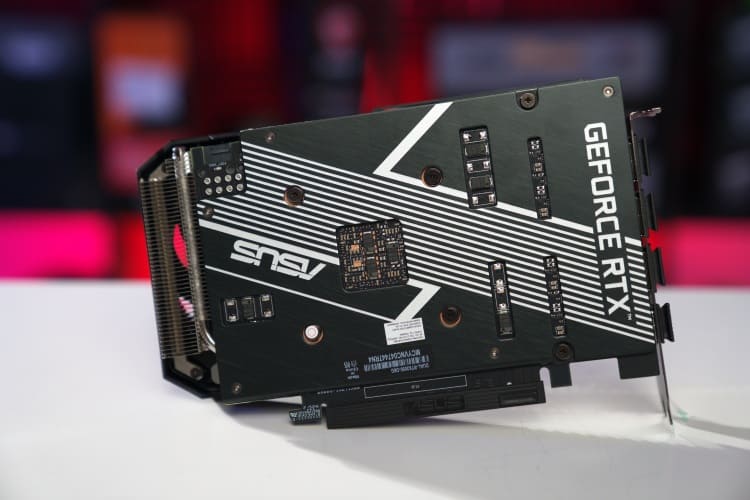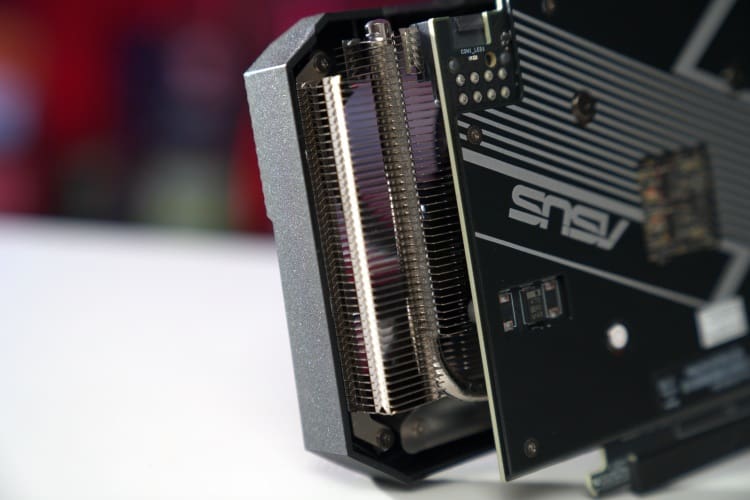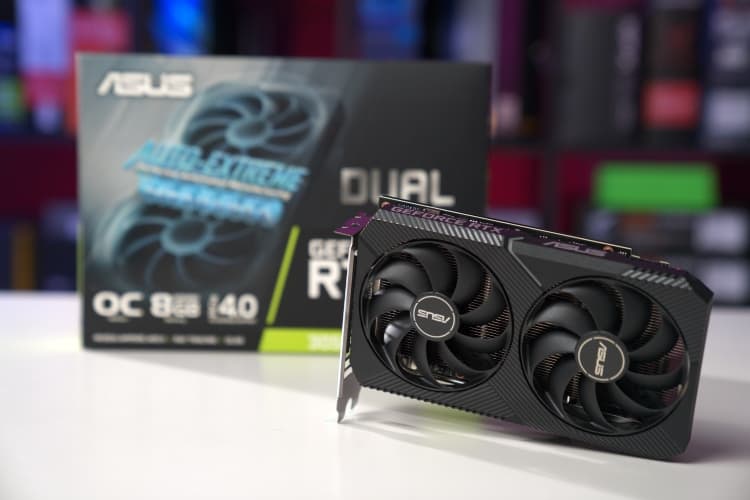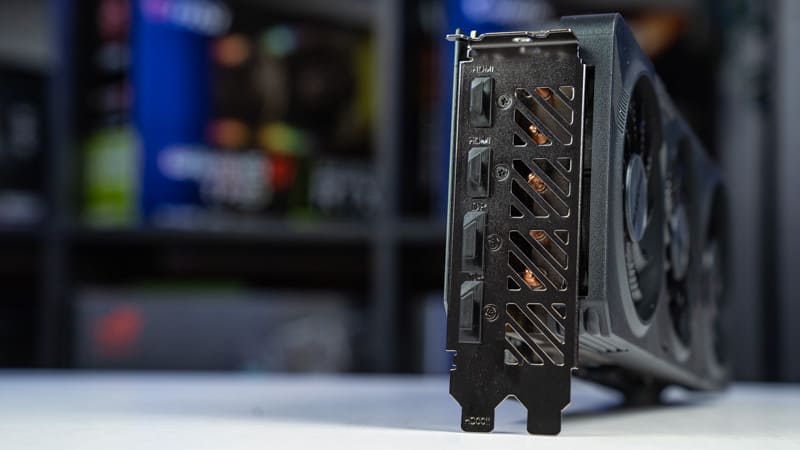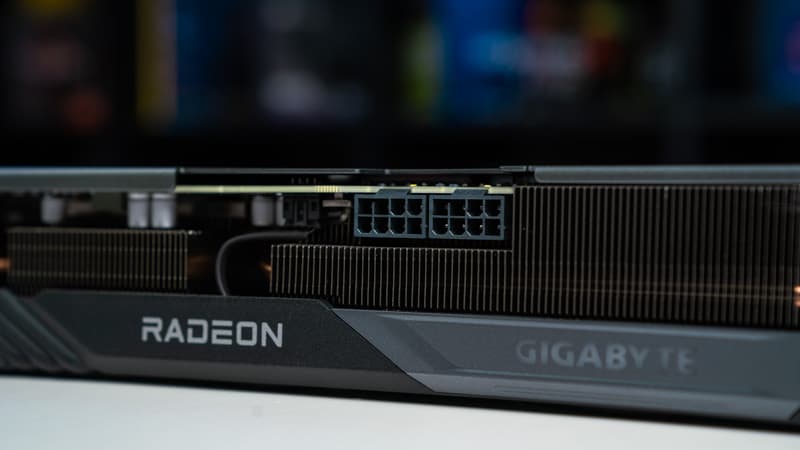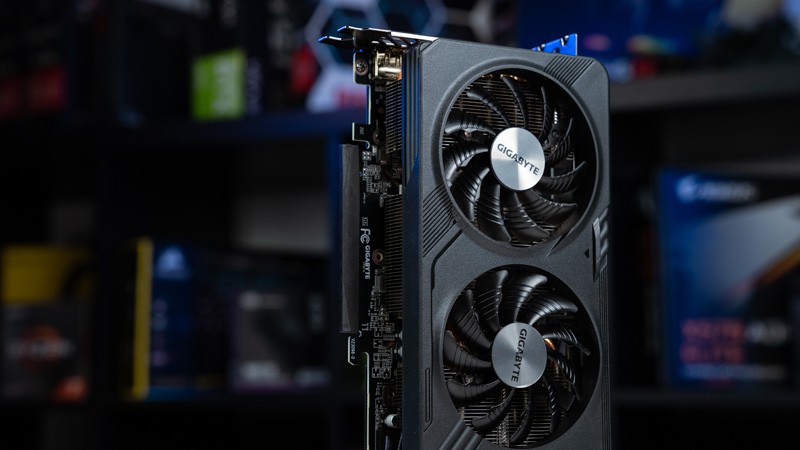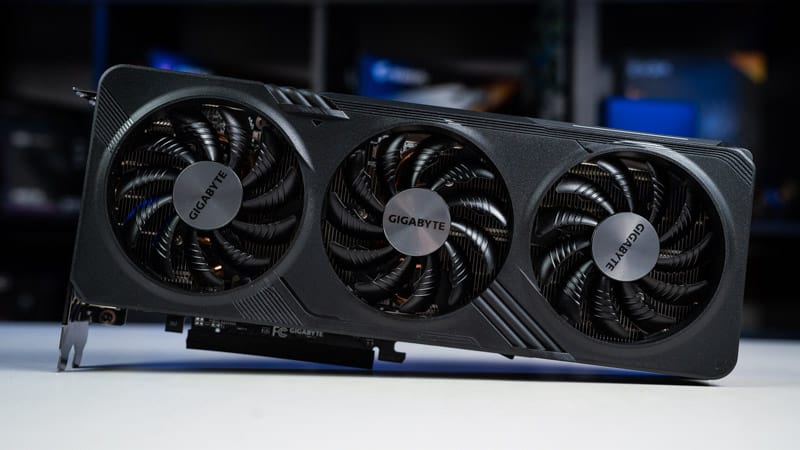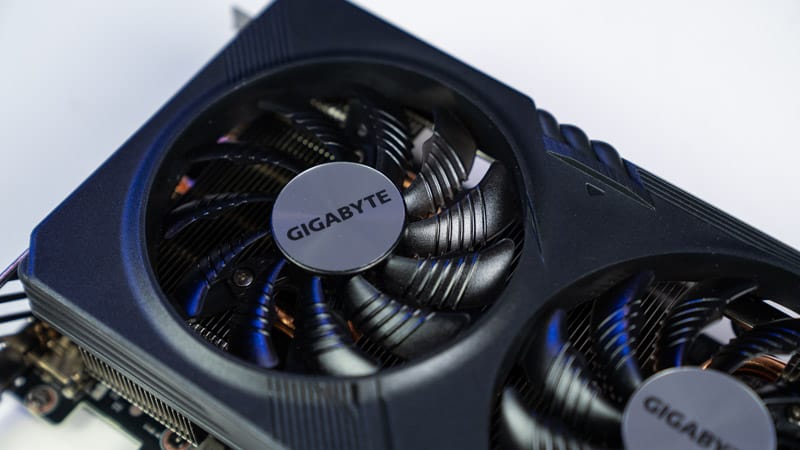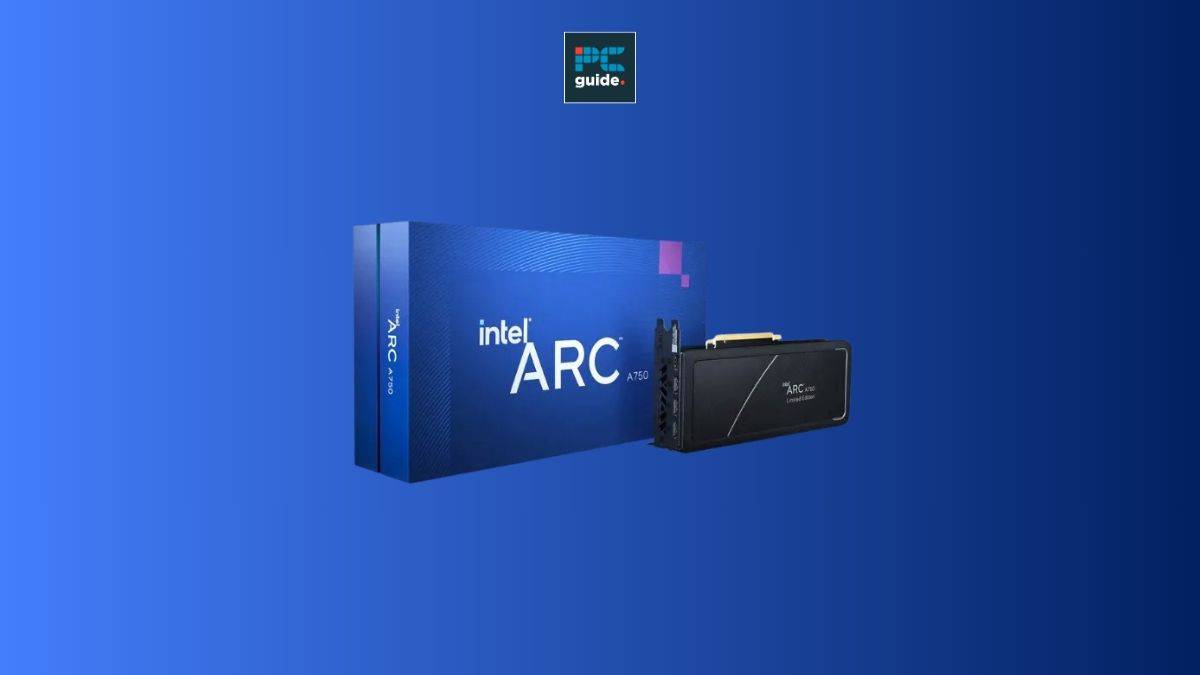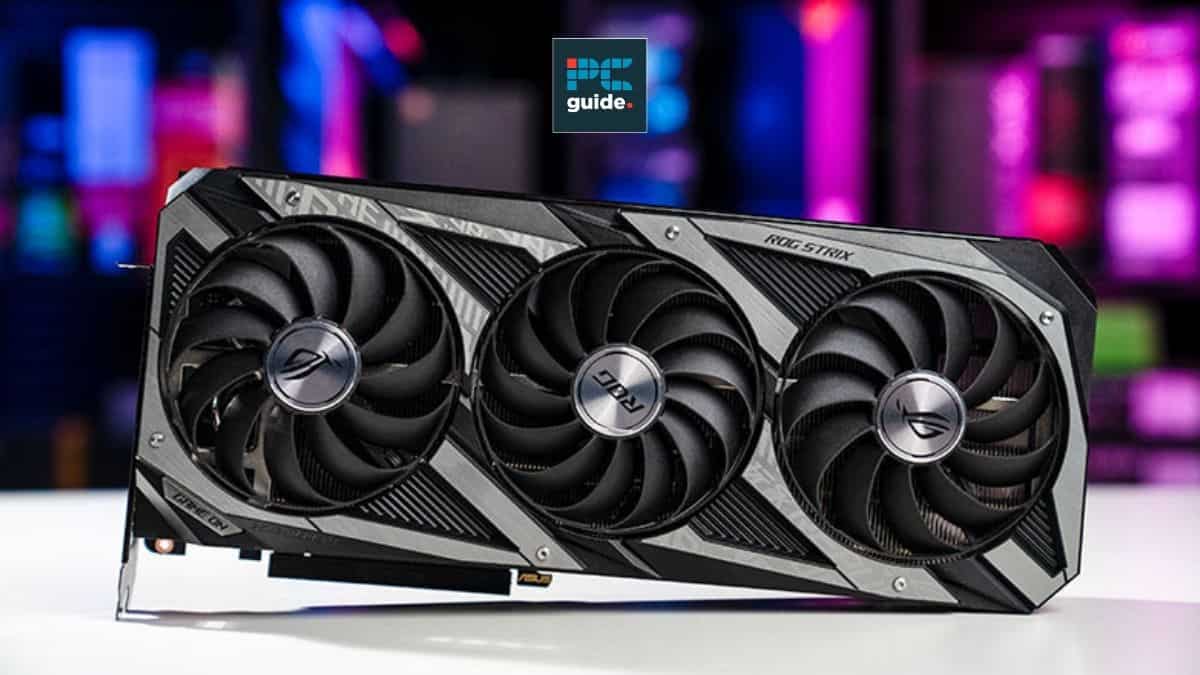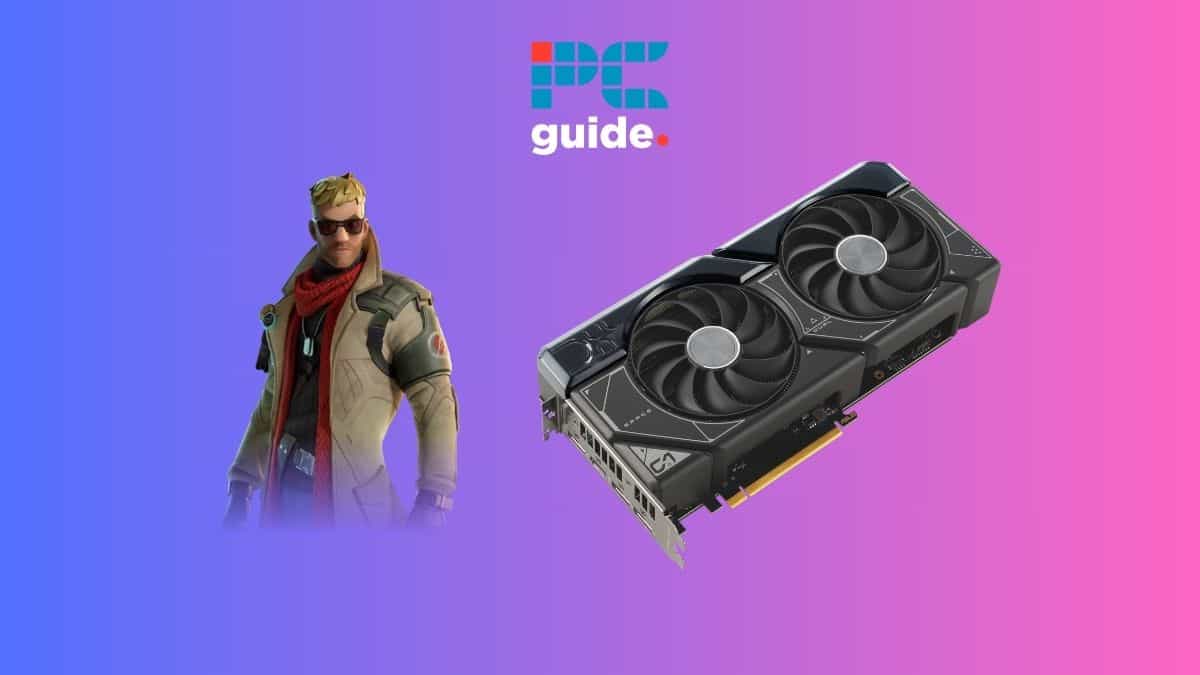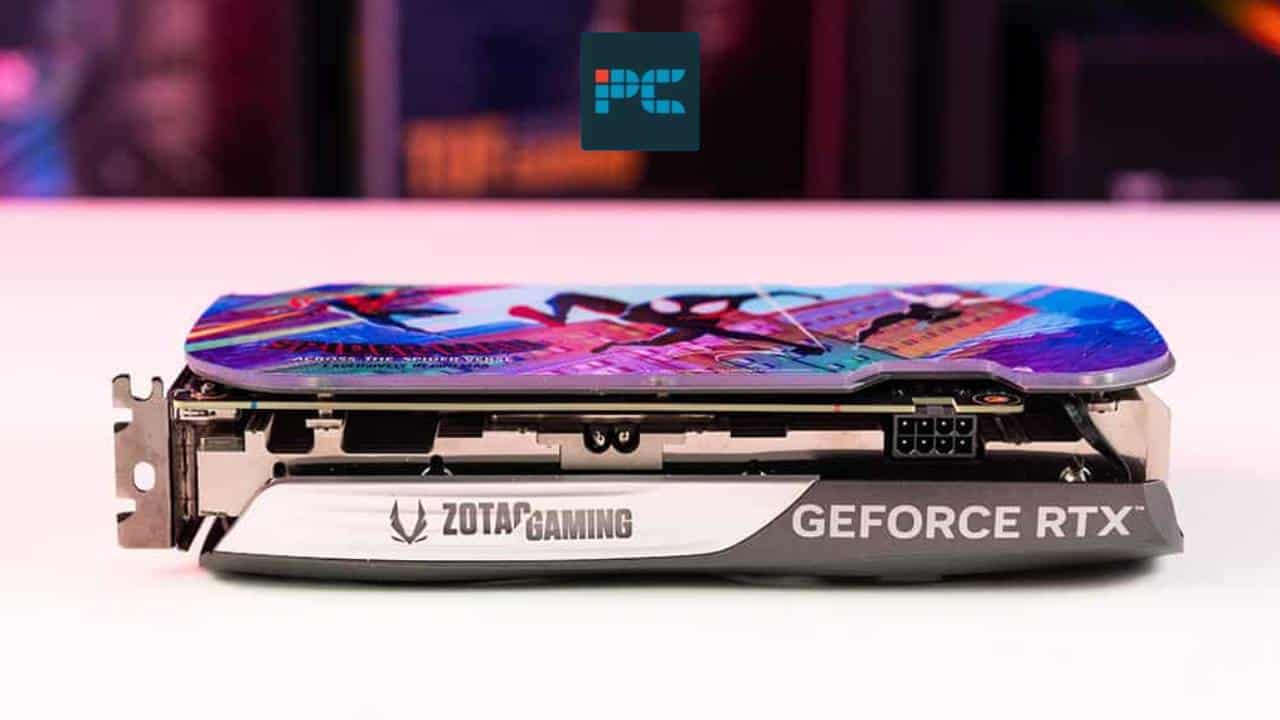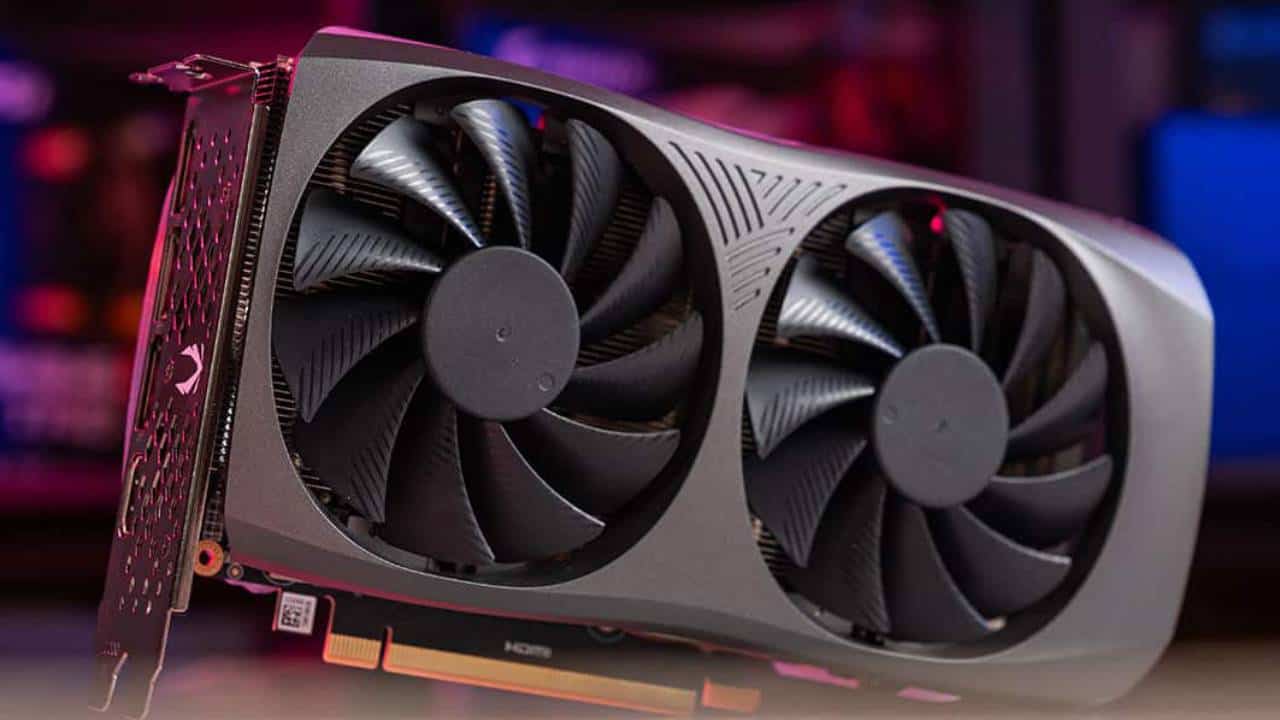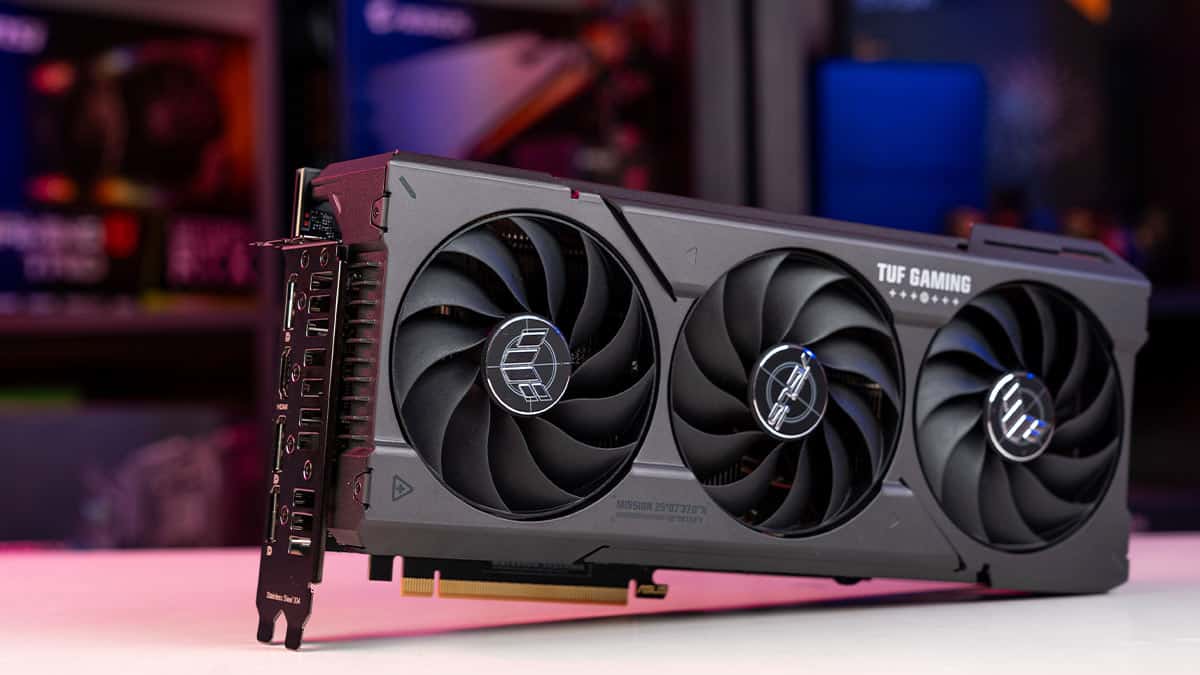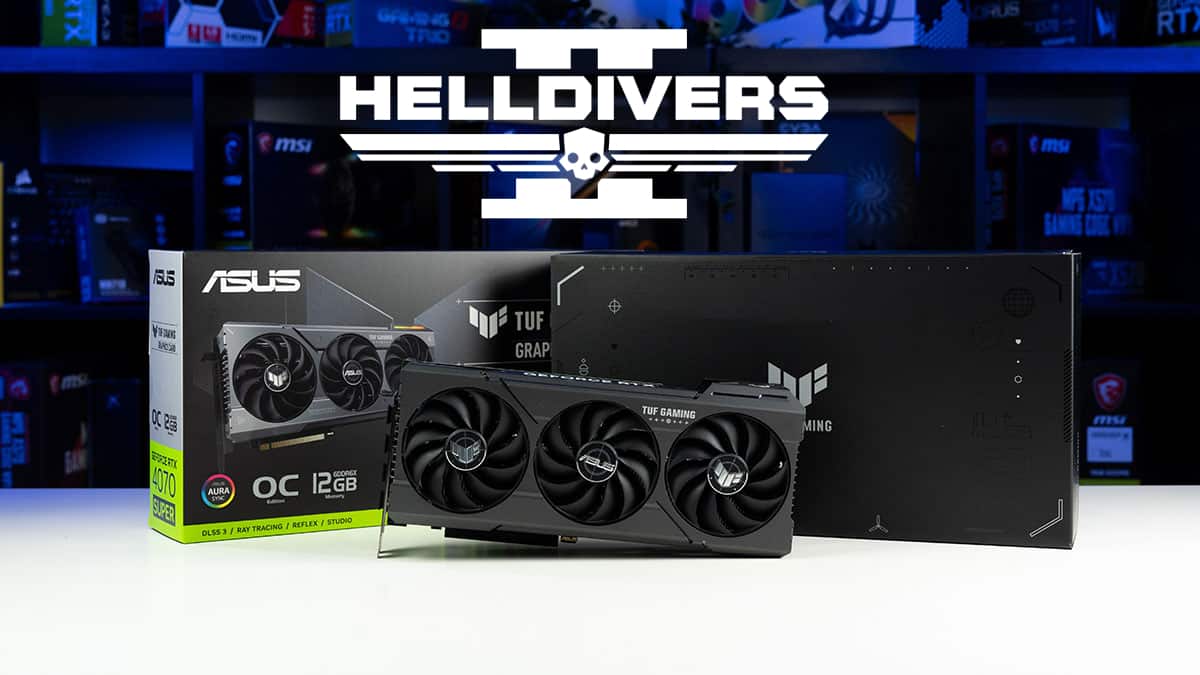Low profile GPUs are a great choice for those who have a smaller PC setup so we’ve outlined some of the best low profile GPUs for you here. These versatile LP GPUs may be smaller than the standard full-height graphics cards, but they can fit into pretty much any PC case. They’re a great space-saving alternative if you want to cram loads of other great components into your setup. For more, we recommend checking out our choices for the best graphics cards.
While low profile graphics cards aren’t as powerful or high-end as the more traditional graphics cards, they’re still able to pack a punch in terms of power. Being smaller, quieter, and producing less heat than their full-height counterparts, if you’re building a compact PC, a low-profile GPU is all you need. In this article, we will review the best low profile graphics cards for your rig, focusing on options that deliver efficient performance without the bulk of standard GPUs.
-
BEST LOW PROFILE GPU
ASUS Dual GeForce RTX 4060 OC Edition

-
BEST LOW PROFILE CASUAL GAMING GPU
Nvidia RTX 3050
- GPU: GA106
- CUDA cores: 2,560
- VRAM: 8GB GDDR6
- Memory bus width: 128-bit
- Bandwidth: 224.0 GB/s
- Base clock speed: 1552 MHz
-
BEST LOW PROFILE AMD GPU
Gigabyte Radeon RX 7600 XT OC
- GPU: Navi 33
- Stream Processors: 2,048
- VRAM: 16GB GDDR6
- Bandwidth: 288.0 GB/s
- Memory bus width: 128-bit
- Base clock speed: 2029 MHz
How we selected the best low profile GPUs
Our selection of the best low-profile graphics cards is based on a comprehensive analysis of performance metrics, size specifications, and cooling efficiency. We take into account performance benchmarks, our reviews, and expert opinions to assess the performance of these cards in various scenarios, and of course, we draw on our in-depth knowledge of graphics cards and PC building. Interested to see how we achieved our benchmark scores? We have a dedicated GPU testing page ready for those wanting to know more.
When choosing a low-profile GPU, key considerations include power consumption, thermal design, and connectivity options. Such cards are crafted to minimize power usage, a vital feature in compact cases with restricted airflow. An effective low-profile GPU should possess a proficient cooling system to keep temperatures in check, ideally without relying on loud fans. The performance-to-size ratio is also a critical aspect. Although low-profile GPUs may not match the performance of full-size models, several are capable of delivering adequate power for casual gaming, graphic design, and video editing tasks. In addition to performance, we focus on the physical attributes that make these cards suitable for small form factor PCs.
Of course, across PC Guide we have a variety of GPU-focused buying guides for different set-ups, brands, and price ranges. For those not constrained by size, it might be worth checking out our picks of the best GPUs overall, or even the best budget graphics cards.

- GPU: AD107
- CUDA cores: 3072
- VRAM: 8GB GDDR6
- Bandwidth: 272.0 GB/s
- Memory bus width: 128-bit
- Base clock speed: 1830 MHz
- Boost clock speed: 2505 MHz
The RTX 4060 is the strongest of the low profile graphics cards, boasting impressive performance for its size. While it is certainly a pricier pick, it will certainly satisfy most low profile enthusiasts.
- High performance in a compact size
- Supports advanced DLSS 3.0 technology
- Efficient power consumption
- Pricier than other low-profile options
- Limited to 8GB of memory
- No RGB lighting for those who prefer it
While the RTX 4060 is far from a dream graphics card for those wanting the pinnacle of hardware performance, there’s absolutely no faulting what it can do in 1080p and even 1440p.
PC Guide
The RTX 4060, with Nvidia’s Lovelace architecture, offers exceptional performance in a low-profile package. It boasts 3072 CUDA Cores and 8GB of GDDR6 memory, along with an impressive boost clock of 2460 MHz. The card’s dimensions are remarkably compact for its power, measuring 163 x 117.6 x 39.5 mm, and it requires a 500W PSU along with an 8-pin PCIe power connector. Notably, it supports DLSS 3.0, enhancing gaming performance through AI-driven graphics rendering.
This graphics card is an excellent option for those who need high-end gaming performance in a small package. The RTX 4060’s capabilities make it suitable for graphically demanding games and applications, and its low power consumption is a significant advantage for compact builds. Its size and power make it ideal for gamers and professionals working in limited spaces who don’t want to compromise on graphical performance. Check out our RTX 4060 review for more info and benchmark results.
Building a mini PC but don’t want to sacrifice performance? The RTX 3050 is your low profile hero. This card fits perfectly in small cases and crushes integrated graphics, delivering delightful 1080p gaming. It even throws in some bonus features like DLSS and basic ray tracing, which are rare finds in this size category. However, it caters more to casual gamers with its moderate power, and may struggle with upcoming demanding titles.
- Solid performance for its size
- Adequate 8GB GDDR6 memory
- Compact and fits in small cases
- Struggles with more demanding games and titles
- Limited ray-tracing capabilities
- Lacks RGB lighting for aesthetics
The ASUS ROG Strix RTX 3050, powered by Nvidia’s Ampere architecture, is a compact yet capable graphics card. It comes with 2560 CUDA Cores, a game clock of 1777 MHz, and a boost clock of 1807 MHz, along with 8GB of GDDR6 memory. This card is designed to fit in smaller cases, with dimensions of 177 x 128 x 51 mm, making it ideal for mini-ITX builds or compact gaming systems. Its 550W recommended PSU and single 8-pin PCIe power connector make it a versatile choice for various system configurations.
This card is best suited for gamers and PC builders who are looking to achieve respectable gaming performance in a small form factor. The RTX 3050’s 8GB GDDR6 memory provides ample power for mainstream gaming and multimedia tasks. While its ray-tracing performance might be mediocre, it still offers the essential features of the Ampere architecture, making it a solid choice for those looking for a balance between size and performance.
- GPU: Navi 33
- Stream Processors: 2,048
- VRAM: 16GB GDDR6
- Bandwidth: 288.0 GB/s
- Memory bus width: 128-bit
- Base clock speed: 2029 MHz
- Boost clock speed: 2539 MHz
The AMD Radeon RX 7600 XT is far from a powerhouse GPU but it offers strong 1080p and 1440p performance, just as long as you aren’t concerned about ray tracing. What’s more, it benefits from double the VRAM we typically find in low profile cards.
- You want a high amount of VRAM
- You want to game in 1080p at max settings
- You’re working with a tight budget
- You want to do ray tracing effectively
- You can find a similar sized RX 7700 XT
The AMD Radeon RX 7600 XT is our pick for the best low profile AMD graphics card for its compact build size and its relatively powerful performance which leads over its budget predecessor, the RX 6500 XT. This new 2024 version features double the VRAM of the RX 7600 (16GB up from 8GB) which should give you substantial overhead for pushing games in 1080p without having to worry about any bottlenecking.
The AMD RX 7600 XT holds up well in 1080p and can offer decent native 1440p performance
AMD Radeon RX 7600 XT review – PC Guide
In our RX 7600 XT review, we found that it largely delivers on its promise of high-end 1080p gaming with Full HD maxing out demanding software. In particular, the likes of Doom Eternal and Cyberpunk 2077 sing well above 60fps when rendered natively with pure rasterization. Ray tracing, however, is where this card suffers, as AMD’s answer to DLSS (FSR) can’t quite compensate in the same way. However, given the compact size and decent performance, it’s worth considering.
Considerations for the best low profile GPUs
There are many factors when it comes to picking the right low profile graphics card for your setup. Let’s take a look at some of the most important.
Size
The size of your chosen low profile graphics card will likely be the most influential factor when choosing the best fit for your PC case.
While these aren’t as fast or high spec as their standard full-sized counterparts, they are a great choice for those who have a smaller PC case or want to pack as many different components into their computer as they can. The smaller stature of these LP GPUs means that they will take up less room, making them a great space-saving alternative if you have your heart set on a smaller PC case.
Take a look at the measurements of your chosen low profile graphics card. Is it small enough to fit into your PC case? Does it give you plenty of space to add all the other components that you want in your computer setup? Some of these may be longer than other LP GPUs, so you should ensure that your PC case has enough room to accommodate your model of choice. It will also be worth double-checking if your chosen LP GPU comes with the low profile bracket you need to fit it into your PC case, as not all of them will include this.
Cooling and noise
One of the best features of a low profile graphics card is that they are so much quieter than their standard, full-sized counterparts. Whereas a standard GPU could potentially make a lot of noise when the fans are whirring to try and cool the unit down, an LP GPU will be able to keep itself cooler at a much-reduced volume. These types of graphics cards don’t tend to produce as much heat as their full-sized counterparts, which could also play a factor in why they’re not as noisy as the fans have less work to do.
However, while most low profile graphics cards come with only a single fan thanks to their smaller stature, some more budget-friendly versions carry passive heatsinks for them to cool efficiently. This will be an important thing to look out for if you want a truly quiet graphics card as they often produce very little noise as a result.
Power
The great thing about low profile graphics cards is that they require less power to work efficiently. While this is mostly because they tend to be less high-spec than their full-sized counterparts, it makes them more energy efficient. This is mostly down to several factors, such as additional features, thermal design, and the LP GPU’s overall makeup.
This helps to reduce the overall cost of your computer build. Because low profile graphics cards consume less power, you’ll need a smaller overall PSU (power supply unit). Most low profile graphics cards don’t tend to use the PSUs to draw power. Instead, they tend to use the PCI-e 16x slot directly. They shouldn’t require any external PCI-e connectors unless the model specifically mentions this.
Verdict
Overall, the RTX 4050 emerges as the top pick for an efficient GPU with an amazing cooling system despite its small size. The RTX 4060’s blend of power, size, and quiet operation makes it an excellent choice for those building small form factor PCs without compromising on performance. Alternatively, the RTX 3050 and AMD RX 6500 XT also excel in performance within a compact design.
FAQs
What is a low profile graphics card?
A low profile GPU is a smaller version of a graphics card made for compact computers. They fit in smaller cases thanks to their reduced height and often have less powerful cooling systems. This means lower performance compared to full-size GPUs, but also lower power consumption. While not ideal for hardcore gaming, they’re perfect for basic tasks and light gaming in constrained builds.

